Intel to Develop Discrete GPUs, Hires Raja Koduri as Chief Architect & Senior VP
by Ryan Smith on November 8, 2017 5:15 PM EST- Posted in
- GPUs
- Intel
- Raja Koduri
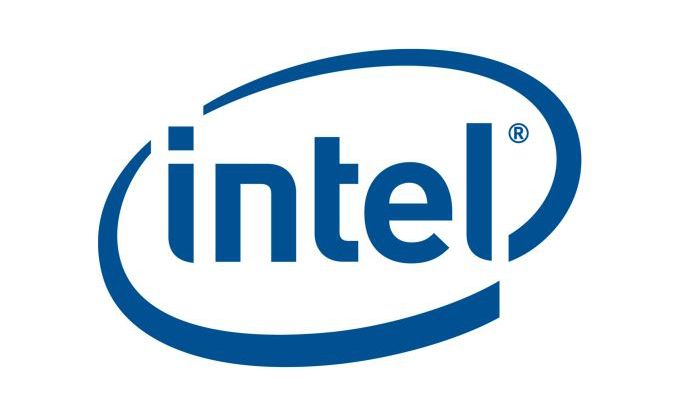
On Monday, Intel announced that it had penned a deal with AMD to have the latter provide a discrete GPU to be integrated onto a future Intel SoC. On Tuesday, AMD announced that their chief GPU architect, Raja Koduri, was leaving the company. Now today the saga continues, as Intel is announcing that they have hired Raja Koduri to serve as their own GPU chief architect. And Raja's task will not be a small one; with his hire, Intel will be developing their own high-end discrete GPUs.
Starting from the top and following yesterday’s formal resignation from AMD, Raja Koduri has jumped ship to Intel, where he will be serving as a Senior VP for the company, overseeing the new Core and Visual Computing group. As a chief architect and general manager, Intel is tasking Raja with significantly expanding their GPU business, particularly as the company re-enters the discrete GPU field. Raja of course has a long history in the GPU space as a leader in GPU architecture, serving as the manager of AMD’s graphics business twice, and in between AMD stints serving as the director of graphics architecture on Apple’s GPU team.
Meanwhile, in perhaps the only news that can outshine the fact that Raja Koduri is joining Intel, is what he will be doing for Intel. As part of today’s revelation, Intel has announced that they are instituting a new top-to-bottom GPU strategy. At the bottom, the company wants to extend their existing iGPU market into new classes of edge devices, and while Intel doesn’t go into much more detail than this, the fact that they use the term “edge” strongly implies that we’re talking about IoT-class devices, where edge goes hand-in-hand with neural network inference. This is a field Intel already plays in to some extent with their Atom processors on the GPU side, and their Movidius neural compute engines on the dedicated silicon sign.
However in what’s likely the most exciting part of this news for PC enthusiasts and the tech industry as a whole, is that in aiming at the top of the market, Intel will once again be going back into developing discrete GPUs. The company has tried this route twice before; once in the early days with the i740 in the late 90s, and again with the aborted Larrabee project in the late 2000s. However even though these efforts never panned out quite like Intel has hoped, the company has continued to develop their GPU architecture and GPU-like devices, the latter embodying the massive parallel compute focused Xeon Phi family.
Yet while Intel has GPU-like products for certain markets, the company doesn’t have a proper GPU solution once you get beyond their existing GT4-class iGPUs, which are, roughly speaking, on par with $150 or so discrete GPUs. Which is to say that Intel doesn’t have access to the midrange market or above with their iGPUs. With the hiring of Raja and Intel’s new direction, the company is going to be expanding into full discrete GPUs for what the company calls “a broad range of computing segments.”
Reading between the lines, it’s clear that Intel will be going after both the compute and graphics sub-markets for GPUs. The former of course is an area where Intel has been fighting NVIDIA for several years now with less success than they’d like to see, while the latter would be new territory for Intel. However it’s very notable that Intel is calling these “graphics solutions”, so it’s clear that this isn’t just another move by Intel to develop a compute-only processor ala the Xeon Phi.
NVIDIA are at best frenemies; the companies’ technologies complement each other well, but at the same time NVIDIA wants Intel’s high-margin server compute business, and Intel wants a piece of the action in the rapid boom in business that NVIDIA is seeing in the high performance computing and deep learning markets. NVIDIA has already begun weaning themselves off of Intel with technologies such as the NVLInk interconnect, which allows faster and cache-coherent memory transfers between NVIDIA GPUs and the forthcoming IBM POWER9 CPU. Meanwhile developing their own high-end GPU would allow Intel to further chase developers currently in NVIDIA’s stable, while in the long run also potentially poaching customers from NVIDIA’s lucrative (and profitable) consumer and professional graphics businesses.
To that end, I’m going to be surprised if Intel doesn’t develop a true top-to-bottom product stack that contains midrange GPUs as well – something in the vein of Polaris 10 and GP106 – but for the moment the discrete GPU aspect of Intel’s announcement is focused on high-end GPUs. And, given what we typically see in PC GPU release cycles, even if Intel does develop a complete product stack, I wouldn’t be too surprised if Intel’s first released GPU was a high-end GPU, as it’s clear this is where Intel needs to start first to best combat NVIDIA.
More broadly speaking, this is an interesting shift in direction for Intel, and one that arguably indicates that Intel’s iGPU-exclusive efforts in the GPU space were not the right move. For the longest time, Intel played very conservatively with its iGPUs, maxing out with the very much low-end GT2 configuration. More recently, starting with the Haswell generation in 2013, Intel introduced more powerful GT3 and GT4 configurations. However this was primarily done at the behest of a single customer – Apple – and even to this day, we see very little OEM adoption of Intel’s higher performance graphics options by the other PC OEMs. The end result has been that Intel has spent the last decade making the kinds of CPUs that their cost-conscious customers want, with just a handful of high-performance versions.
I would happily argue that outside of Apple, most other PC OEMs don’t “get it” with respect to graphics, but at this juncture that’s beside the point. Between Monday’s strongly Apple-flavored Kaby Lake-G SoC announcement and now Intel’s vastly expanded GPU efforts, the company is, if only finally, becoming a major player in the high-performance GPU space.
Besides taking on NVIDIA though, this is going to put perpetual underdog AMD into a tough spot. AMD’s edge over Intel for the longest time has been their GPU technology. The Zen CPU core has thankfully reworked that balance in the last year, though AMD still hasn’t quite caught up to Intel here on peak performance. The concern here is that the mature PC market has strongly favored duopolies – AMD and Intel for CPUs, AMD and NVIDIA for GPUs – so Intel’s entrance into the discrete GPU space upsets the balance on the latter. And while AMD is without a doubt more experienced than Intel, Intel has the financial and fabrication resources to fight NVIDIA, something AMD has always lacked. Which isn’t to say that AMD is by any means doom, but Intel’s growing GPU efforts and Raja’s move to Intel has definitely made AMD’s job harder.
Meanwhile, on the technical side of matters, the big question going forward with Intel’s efforts is over which GPU architecture Intel will use to build their discrete GPUs. Despite their low performance targets, Intel’s Gen9.5 graphics is a very capable architecture in terms of features and capabilities. In fact, prior to the launch of AMD’s Vega architecture a couple months back, it was arguably the most advanced PC GPU architecture, supporting higher tier graphics features than even NVIDIA’s Pascal architecture. So in terms of features alone, Gen9.5 is already a very decent base to start from.
The catch is whether Gen9.5 and its successors can efficiently scale out to the levels needed for a high-performance GPU. Architectural scalability is in some respects the unsung hero of GPU architecture design, as while it’s kind of easy to design a small GPU architecture, it’s a lot harder to design an architecture that can scale up to multiple units in a 400mm2+ die size. Which isn’t to say that Gen9.5 can’t, only that we as the public have never seen anything bigger than the GT4 configuration, which is still a relatively small design by GPU standards.
Though perhaps the biggest wildcard here is Intel’s timetable. Nothing about Intel’s announcement says when the company wants to launch these high-end GPUs. If, for example, Intel wants to design a GPU from scratch under Raja, then this would be a 4+ year effort and we’d easily be talking about the first such GPU in 2022. On the other hand, if this has been an ongoing internal project that started well before Raja came on board, then Intel could be a lot closer. Given what kind of progress NVIDIA has made in just the last couple of years, I can only imagine that Intel wants to move quickly, and what this may boil down to is a tiered strategy where Intel takes both routes, if only to release a big Gen9.5(ish) GPU soon to buy time for a new architecture later.
In directing these tasks, Raja Koduri has in turn taken on a very big role at Intel. Until recently, Intel’s graphics lead was Tom Piazza, a Sr. Fellow and capable architect, but also an individual who was never all that public outside of Intel. By contrast, Raja will be a much more public individual thanks to the combination of Intel’s expanded GPU efforts, Raja’s SVP role, and the new Core and Visual Computing group that has been created just for him.
For what Intel is seeking to do, it’s clear why they picked Raja, given his experience inside and outside of AMD, and more specifically, with integrated graphics at both AMD and Apple. The flip side to that however is that while Apple’s graphics portfolio boomed under Raja during his time at the company, his most recent AMD stint didn’t go quite as well. AMD’s Vega GPU architecture has yet to live up to all of its promises, and while success and failure at this level is never the responsibility of a single individual, Intel will certainly be looking to have a better launch than Vega. Which, given the company’s immense resources, is definitely something they can do.
But at the end of the day, this is just the first step for Intel and for Raja. By hiring an experienced hand like Raja Koduri and by announcing that they are getting into high-end discrete GPUs, Intel is very clearly telegraphing their intent to become a major player in the GPU space. Given Intel’s position as a market leader it’s a logical move, and given their lack of recent discrete GPU experience it’s also an ambitious move. So while this move stands to turn the PC GPU market as we know it on its head, I’m looking forward to seeing just what a GPU-focused Intel can do over the coming years.
Source: Intel



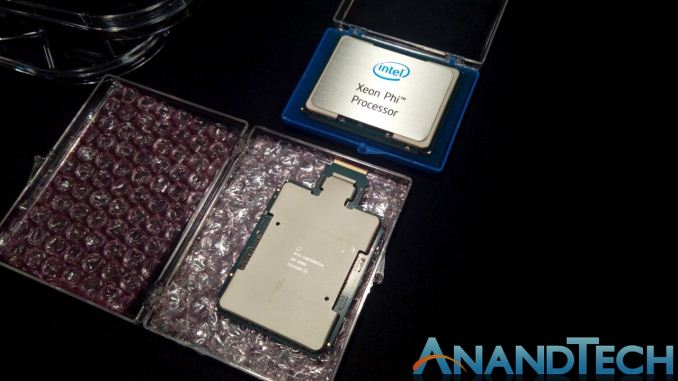
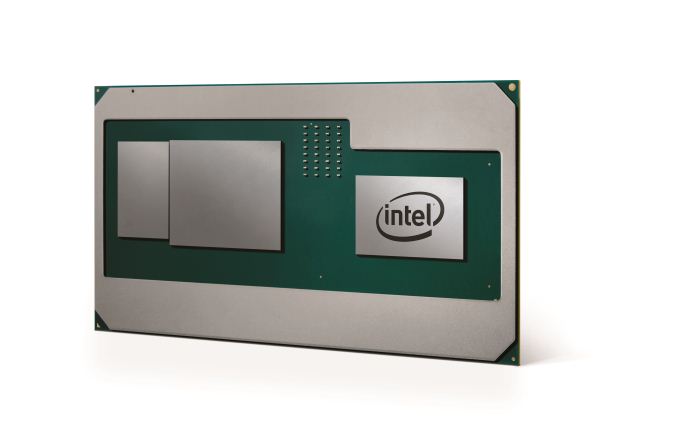
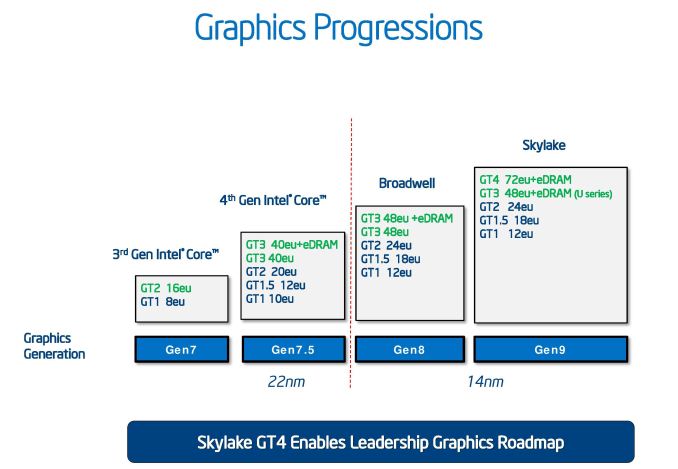
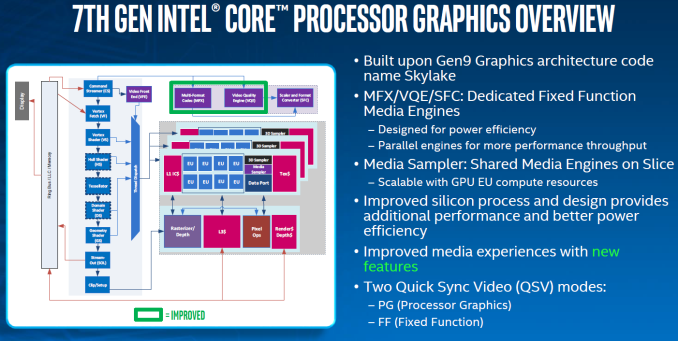








200 Comments
View All Comments
Yojimbo - Thursday, November 9, 2017 - link
I'd assume that this news means Intel will eventually replace AMD's GPU with their own if there is a follow-up product that comes out in the appropriate time frame. But I don't think anyone outside Intel can guess when Intel thinks it will have such a GPU. It depends on how long they've already been working on a discrete GPU and what strategy they take to achieve it.I'd also assume that they need AMD now because they don't currently have an appropriate GPU themselves. That seems to suggest either they wanted this product out in a particular proximate time frame or they won't have an appropriate GPU in the near future. Those two alternatives don't tell us very much, so everything is pretty much clear as mud.
Iamzedanger - Thursday, November 9, 2017 - link
People have been focusing on what this means in relation to Nvidia, but I think we should also be thinking about AMD. I think the many lake g exists not just because of apple, but also to thwart 45 W ryzen mobile offerings. Odd yes, that Intel had to get a you from amd itself to combat and, but that's exactly it: they couldn't do anything else. I think ryzen 45w will come, why not? Amd finally has a core that can compete with Intel, and they have the far better gpu, they can absolutely blow Intel away at 35/45w. Intel can't compete if amd launches ryzen 45w with a really good igp. So they actually just got some Radeon for themselves.Same thing in the desktop space, Intel can see the damage and will do with their apu's once they are released. Fast ryzen cores with Vega igp? It will be really tough for Intel, especially if there's assymetric crossfire with discrete Vega gpu's. And it won't stop. Intel is basically forced to do something about their graphics, or be left behind. They can't partner up with Nvidia. They can't partner up with amd on desktop. So they have to create their own gpu's. Of course they also had to address the HPC and other markets so it's a win win.
iTon - Thursday, November 9, 2017 - link
i'm not sure intel will success on graphics though hires raja koduri for loyaltyhescominsoon - Thursday, November 9, 2017 - link
Intel's problem has always been their absolutely crap drivers. If this hire resolves that then it is a good move.willis936 - Thursday, November 9, 2017 - link
Yeah because when I think "high quality graphics drivers" I think "Radeon".willis936 - Thursday, November 9, 2017 - link
"aja’s move to Intel has definitely made AMD’s job harder"typo: you mispelled easier
cap87 - Thursday, November 9, 2017 - link
You're in denial bud, if anyone has the resources to make HBM2 go full scale deployment and adoption it's Intel. AMD could only dream of having the budget Intel appoints for R&D and now that they've snatched Raja Koduri away it's only a matter of time before he starts courting other GPU developers and get the ball rolling real quick. Unless Intel drops the ball AMD is in for a world of pain.willis936 - Thursday, November 9, 2017 - link
RTG has been bad since long before ATI’s acquisition. Seeing Raja through the door can only help Lisa build a proper GPU architecture.Dragonstongue - Thursday, November 9, 2017 - link
could be Raja had already worked his arse off to ensure Navi maybe even further had already been designed by "his team" while he was lead and he "jumped" to Intel to ensure both AMD and Intel were/are directly able to address Nv GPU concerns..Saying Navi as much of the previous including Polaris was more or less already "done" by time Raja became lead of graphics division, Vega might have been him giving muscle where muscle was needed much like Keller did for Zen, "optimize" whereas Zen+ Zen++ are very much driven by Keller/team, Raja likely similar, brought onboard to smooth transition over and give a fighting future, cause Polaris/Vega/GCN no matter who looks at it are NOT terrible designs, far from, they just need more time to really optimize them, maybe to garner more experience from Intel in regards to lower actual power use will help Radeons going forward just as much as Radeons will help Intel for their own graphics ability to compete.
AMD already has some potential direct competition to Nv graphics, whether folks like to believe it or not, Radeons have more or less always been able to take on from lowest end to highest end for GPU space vs Nv (not to mention they seem to be made "fatter" whereas Nv designs generally only seem to be "fat" that is extra functions for hashing, advanced features for DX versions etc only at their highest end)
Maybe the story is more complex, that AMD knew Raja was going to do this all along once RTG was :functional; again, so he went to Intel to give a man in the middle RTG for Intel as well so they can directly help each other forward for licensing deals for graphics while maintaining their mostly duopoly for cpu (x86) status quo, maybe that was AMD deal with Intel, if you want us to have/help for your graphics, Raja MUST be the middle man that formed both divisions (or at least was/is leader for both)
Radeon group was "disbanded" before Raja came back to AMD and he "made" RTG happen, maybe the long term goal for AMD and Intel was exactly as we now see it (Raja to esnrue smooth transition for both companies in graphics??) for Intel and AMD to be able to compete on many fronts not only x86, they needed folks like Jim Keller and Raja to "lead them forward"
Interesting to say the least, probably a well engineered plan overall, not as "cloak and dagger" as it appears?
agilesmile - Thursday, November 9, 2017 - link
Dragonstongue, I'm also thinking AMD and Intel negotiated this move and integration of GPU was part of it. Probably Raja wanted to move to work on a new project I guess, but likely he keeps good relationships with AMD fellows.I also agree that this move may help remove Nv monopoly in compute space. I think that high margin use cases are linux based and Nv stack is all closed source. Now with Intel in, it's likely an OSS stack will appear/mature for Intel and AMD GPUs so they get leverage over their competition (because of higher dev interest).